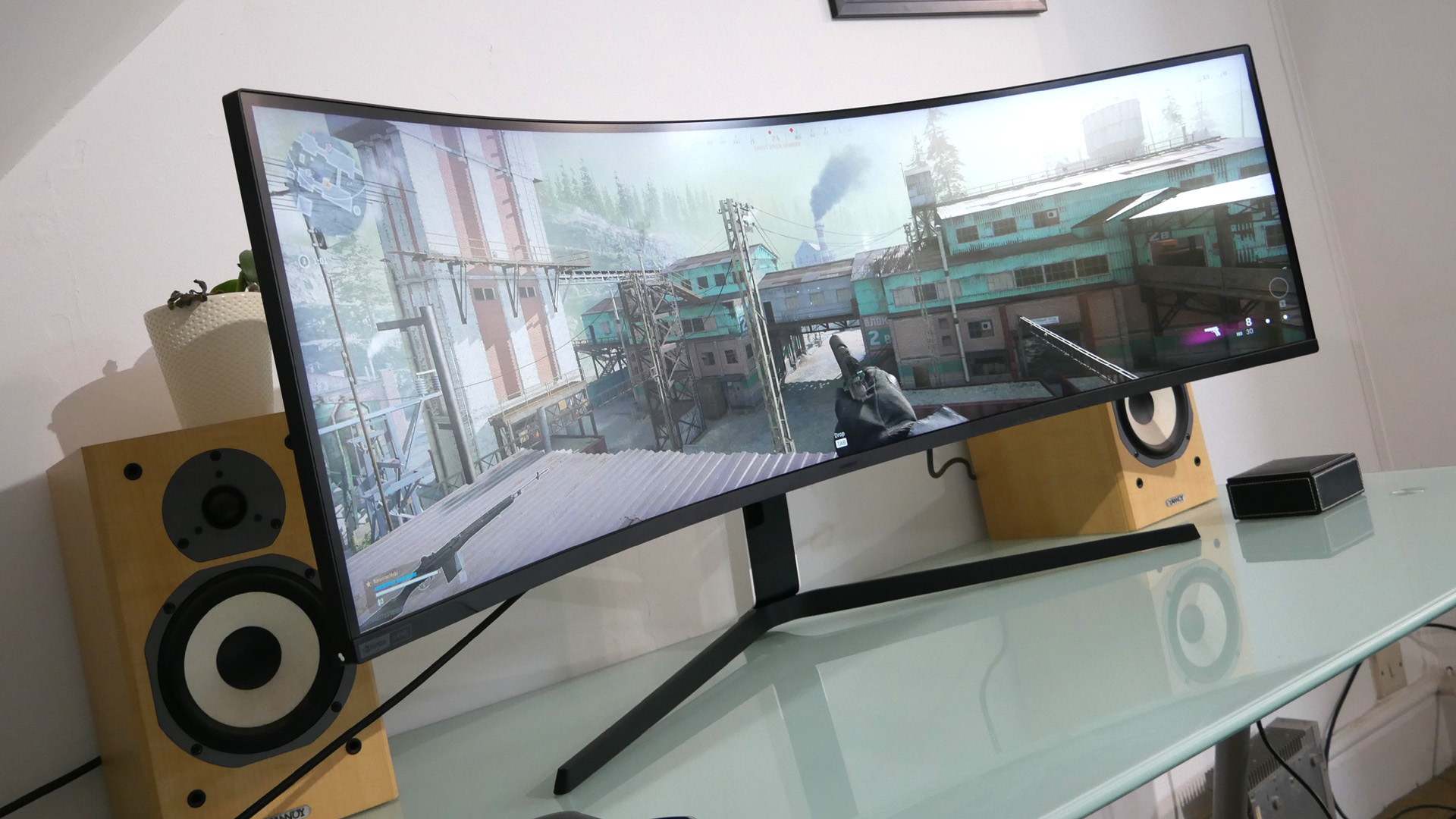Our Verdict
The original G9’s one obvious flaw was clunky edge-lit backlighting. In theory, the Neo G9 buries that with a cutting-edge mini-LED backlight. In practice, some surprising clunkiness remains.
For
- Stupendous 49-inch, uber-curved VA panel
- Outrageous peak brightness
- Super-fast pixel response and refresh
Against
- Mini-LED backlight implementation is clunky
- Preposterously expensive
PC Gamer's got your back
The best just got a whole lot better. That’s surely a foregone conclusion for the new Samsung Odyssey Neo G9. After all, the original Odyssey G9 was already Samsung’s tip-top gaming monitor. Now it’s been given the one upgrade it really needed. Yup, the Neo G9 is packing a mini-LED backlight.
The previous Samsung Odyssey G9 had plenty going for it, not least a monster 49-inch 32:9 aspect panel with an extreme wrap-around curve and the minor matter of some seven million pixels thanks to a native resolution of 5,120 by 1,440. It was also good for an eye-popping 1,000 nits, while VA panel technology delivered static contrast of 2,500:1. Oh, and the original G9’s pixel response was rated at 1ms grey-to-grey, an achievement normally only attained by IPS and TN panels.
Panel size: 49-inch
Panel technology: VA
Native resolution: 5,120 x 1,440
Aspect Ratio: 32:9
Refresh rate: 240Hz
Response time: 1ms
HDR: VESA Quantum HDR 2000
Contrast: 1,000,000:1
Color: 95 percent DCI-P3
Brightness: 2,000 cd/m2
Video Inputs: DisplayPort 1.4 x1, HDMI 2.1 x2
Other: AMD FreeSync Premium Pro, Nvidia G-Sync Compatible
MSRP: $2,499 | £1,849
As for features like 240Hz refresh and adaptive sync, they’re surely givens on this class of uber high-end gaming display. Of course, all that sweet technology was wrapped in some suitably expensive, showbiz threads, including the kind of chassis and stand only a megabucks outfit like Samsung can engineer. By several measures, the original G9 was positively peerless.
Well, the Samsung Odyssey Neo G9 has carried over all that good stuff. Out of the box, it looks identical to the old G9. Deep inside, however, the original G9’s single most obvious shortcoming has been addressed. And then some. The first G9 delivered its theoretically impressive HDR 1000 performance courtesy of a rudimentary edge-lit backlight. Yes, it was very powerful. Sure, it had local dimming zones. But only 10 of them. In reality, that advertised local dimming was a bit of a con. Instead, the G9 got by on account of the excellent inherent contrast of its VA panel.
The Neo G9 still has a fantastic VA panel. But its new backlight doesn’t just have full-array rather than edge-lit dimming. It packs a cutting-edge mini-LED tech with no fewer than 2,048 zones. This thing is several orders of magnitude more sophisticated than before. As if that wasn’t enough, the Neo G9’s peak brightness has doubled to a retina-wrecking 2,000 nits. What a beast.
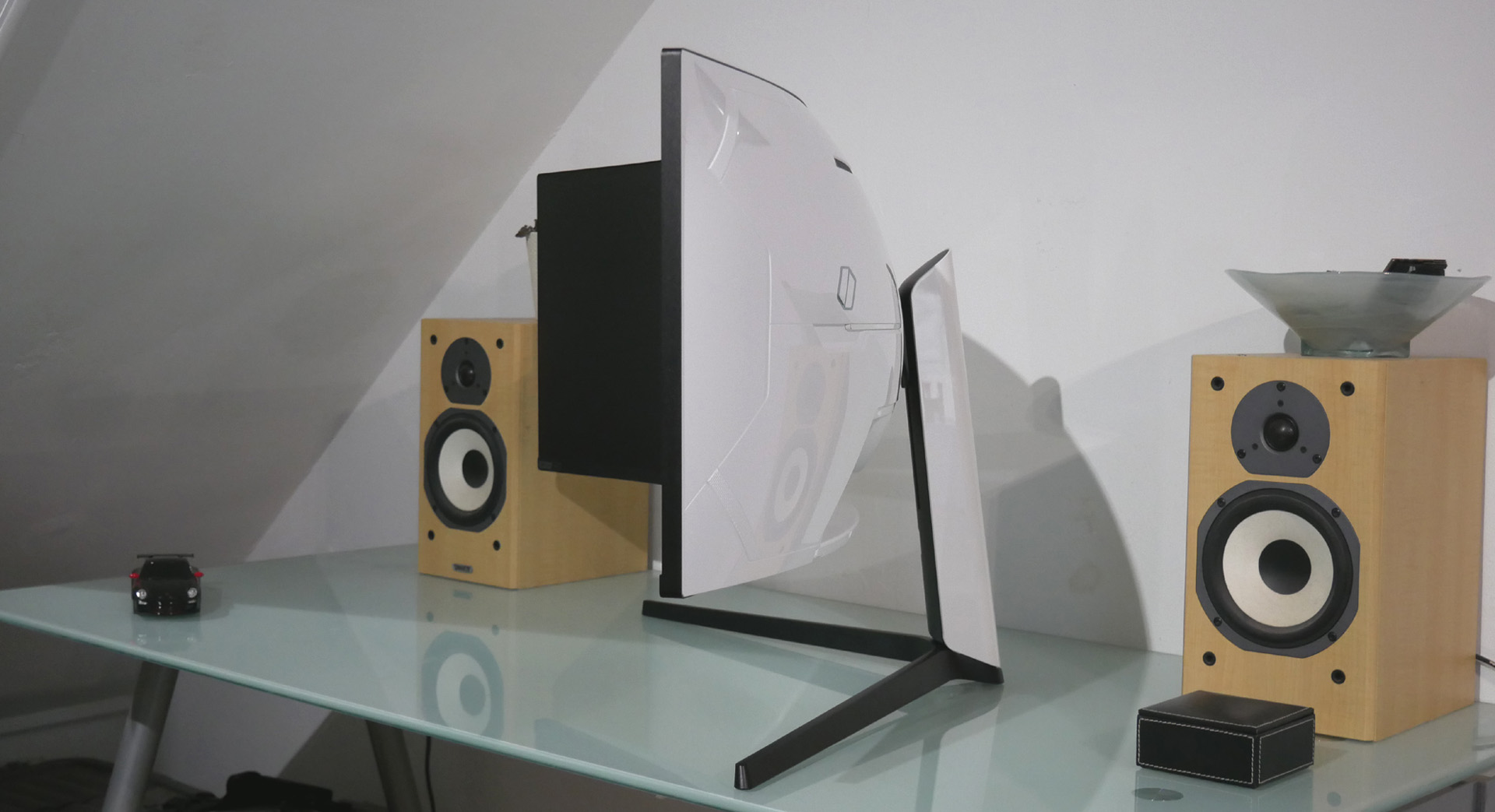
As for additional upgrades, the Neo G9 now supports HDMI 2.1. So you can enjoy up to 144Hz refresh over HDMI, including 120Hz with the latest consoles. The full 240Hz action is available only via DisplayPort. And remember that, for now, neither the Microsoft Xbox Series X|S or the Sony Playstation 5 support the G9’s extreme ultrawide aspect ratio and resolution. That HDMI 2.1 interface may come in handy one day, but right now this epic panel isn’t a good fit for any console.
Nor, to be entirely candid, is it the technical tour de force we’d been hoping for. The problem with any backlight-based rather than per-pixel local dimming technology is that compromises have to be made. Put another way, an algorithm has to decide how bright any given zone should be based on the image data. The results are never going to be perfect.
Visible halos around small, bright objects are the sort of issue you expect from full-array dimming. But the Neo G9 has its own, surprisingly crude, backlight-induced image quality issues. Admittedly, they’re most visible on the Windows desktop rather than in-game or watching video. But by way of example, if you position a bright white window next to an all-black window, the adjacent edge of the former visibly dims. Or let’s say you move a small, bright object over a dark background. The same thing happens. The small, bright object dims. Even uglier, if something like a bright dialogue box pops up across the divide between light and dark elements, the result is a gradient of brightness across the box.
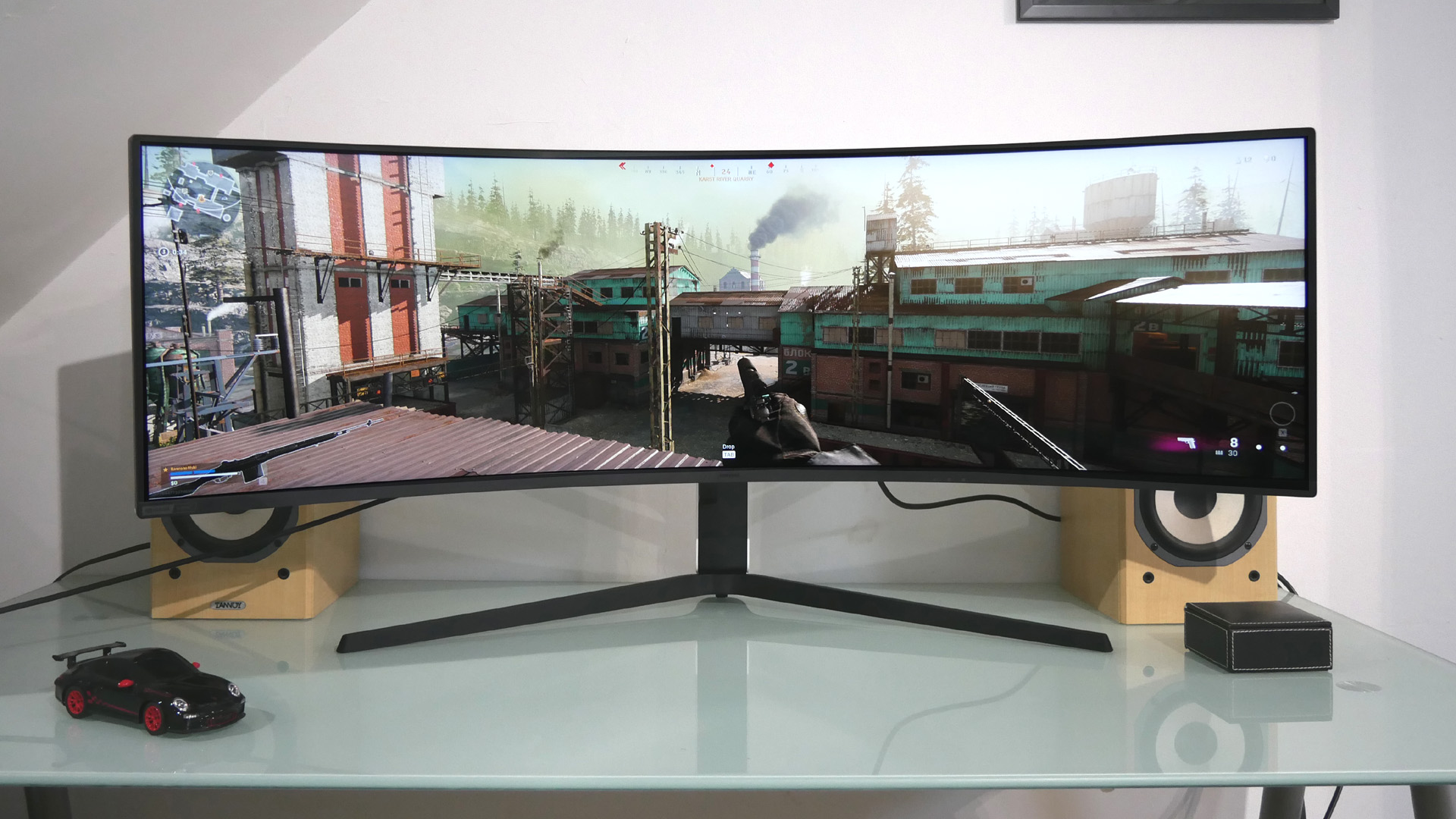
For the record, all this applies to both SDR and HDR modes and, on the Windows desktop, it’s all rather messy and distracting. You could say, so what? This monitor isn’t designed for serious content creation or office work. But at this price point, it’s surely a serious flaw.
The question of whether it’s an issue worth putting up with in return for the in-game experience is tricky. All of what made the original G9 so fabulous remains. For sheer gaming immersion, the crazy 1000R curve, huge 49-inch proportions, and relatively high resolution combine to deliver an experience that few, if any, screens can match. Graphics-heavy titles such as Cyberpunk 2077 or Witcher III are what the G9 does best. In that context, the Samsung Odyssey Neo G9 delivers arguably the best visual experience on the PC today.
It’s no slouch when it comes to competitive online shooters, either. We’re not sure how Samsung has managed to create such fast VA panels of late. But it’s impressive all the same. Even using the most aggressive of the three levels of user-configurable overdrive offered in the Neo G9’s OSD menu, there’s no discernible overshoot. Just oodles of pace. This thing is so, so fast.
The same goes for perceived latency. Running at 240Hz, the Neo G9 feels lightning-quick, provided you have the megabucks GPU required to drive it at really high frame rates. Normally, that would be a significant problem. But if you can afford this 49-inch monster, you can probably stretch to the equally expensive graphics board to go with it.
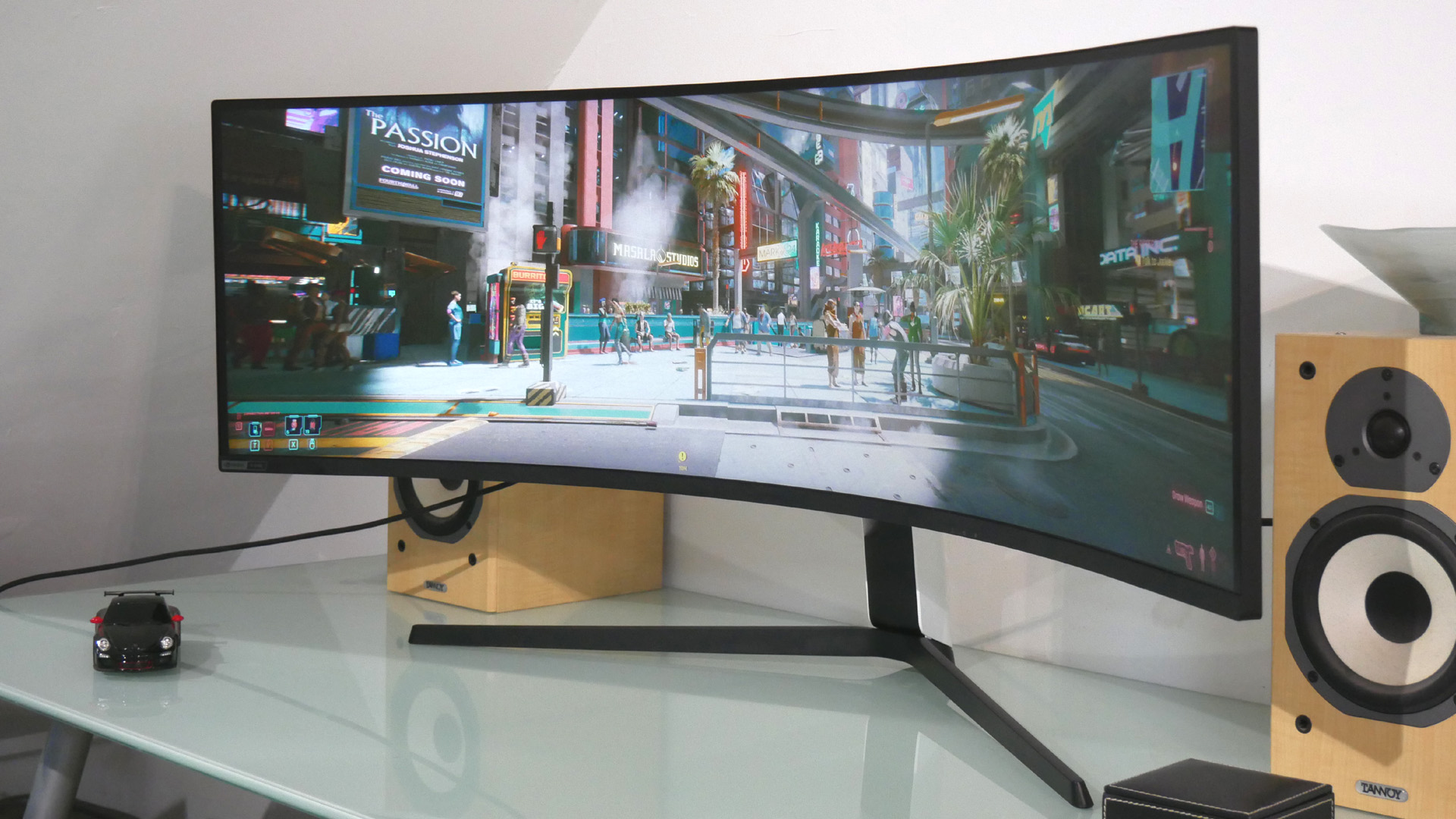
The final piece of the puzzle is HDR performance. Here, the story is again a little mixed. At its best, HDR content seriously sizzles. It’s also much harder to pick up on the backlight issues that are so very obvious on the desktop. But the Neo G9 isn’t quite as dramatic an upgrade over the old G9 as you might expect from the huge uptick in dimming zones and doubling up on peak brightness.
What’s more, SDR content is handled poorly in HDR mode. Some screens can be set up to render SDR almost indistinguishably in either SDR or HDR modes. That’s handy because it means you can simply toggle HDR mode and you’re good to go. But with the Neo G9, you’ll need to jump between modes to get the best experience. Another minor niggle—and a surprising oversight—is that you can’t have both pixel overdrive and adaptive refresh enabled at the same time.
Overall, then, the Samsung Odyssey Neo G9 is both a stellar experience and a conspicuous victim of the lofty expectations we implied up top. Its progenitor was a very good display with a fairly obvious shortcoming involving backlight tech. On paper, the Neo G9 absolutely buries that. In practice, the Neo G9’s mini-LED creates as many problems as it solves. We also can’t help but observe that, at this price point, you have so many options. The most obvious alternative, perhaps, is a large-format 120Hz OLED TV with HDMI 2.1 connectivity.
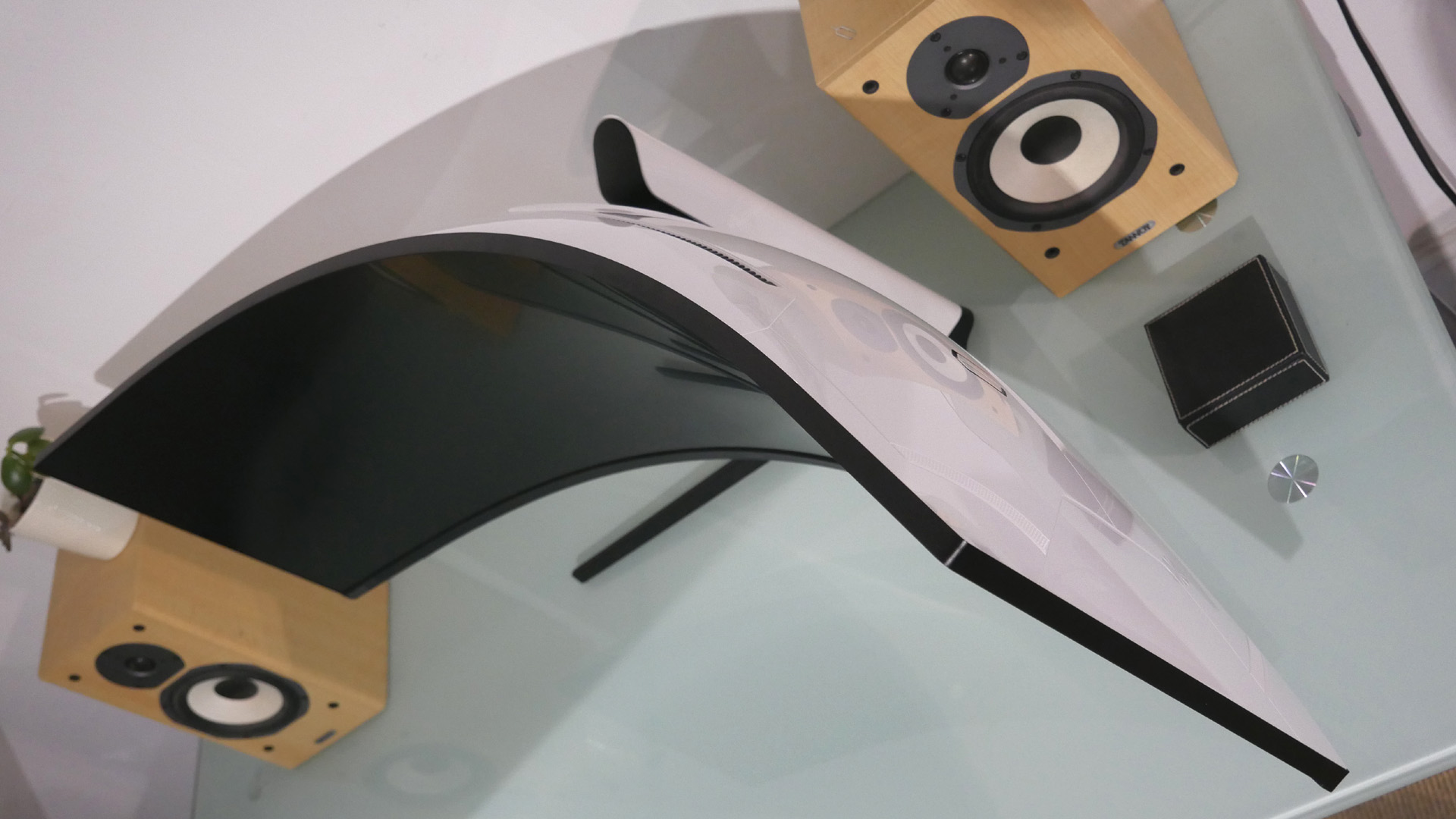
Actually, you can have that for far, far less money and with it, even better pixel response, plus perfect per-pixel lighting and no mucking about with dimming zones and clunky algorithms. Granted, that OLED option comes with its own shortcomings, especially as a PC monitor rather than a console gaming panel. But it sure makes for an unflattering comparison when it comes to value for money.
The original G9’s one obvious flaw was clunky edge-lit backlighting. In theory, the Neo G9 buries that with a cutting-edge mini-LED backlight. In practice, some surprising clunkiness remains.

Jeremy has been writing about technology and PCs since the 90nm Netburst era (Google it!) and enjoys nothing more than a serious dissertation on the finer points of monitor input lag and overshoot followed by a forensic examination of advanced lithography. Or maybe he just likes machines that go “ping!” He also has a thing for tennis and cars.
